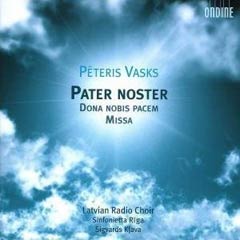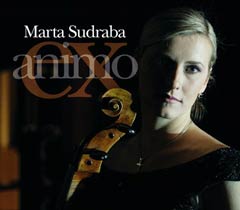
Perhaps the best known modern Latvian composer is Pēteris Vasks. His name is often mentioned with other classical luminaries such as Estonia’s Arvo Pärt and Poland’s Henryk Mikołaj Górecki. His compositions have been performed and recorded by well-known ensembles such as the Kronos Quartet and Kremerata Baltica. He also has been awarded the Latvian Great Music Award three times—in 1993, 199, and 2000.
The term “modern classical music” may bring to mind dissonant, noisy, almost unlistenable compositions. Sure, there is plenty of that today, but I think one of the many reasons Vasks is the most famous Latvian composer in the world today is that he transcends all of the stereotypes about modern classical music. Certainly there are works of his that some may call “difficult to listen to,” not to mention “really depressing,” but that might be because so many of his works are deeply emotional and—unsurprisingly, as he is the son of a minister—intensely spiritual.
One field that Vasks particularly excels in is compositions of a sacred nature. An excellent example of this is Pater Noster, the 2007 compact disc of sacred choir music released by the Finnish record company Ondine. The CD contains the Vasks sacred works “Pater Noster,” “Dona Nobis Pacem” and the five-movement “Missa.” All the works are performed by the distinguished Latvian Radio Choir conducted by Sigvards Kļava. The Radio Choir is backed up by the orchestra Sinfonietta Riga.
The Latvian Radio Choir was founded in 1940 and is considered one of the best choirs in Latvia, which quite something, considering how many hundreds of choirs there are in Latvia. The choir has won the Latvian Great Music Award four times (1994, 2000, 2004 and 2005) and has won other awards all over the world. Sinfonietta Riga was founded in 2006, and is directed by the conductor and oboist Normunds Šnē.
The liner notes include the original Latin texts of the works, as well as English translations. Also contained is a revealing interview with Vasks about these works conducted by Ināra Jakubone of the Latvian Music Information Centre. Helpfully, the interview is translated into English, German, French and Finnish.
The work “Pater Noster” is quiet and sincere (it is a prayer, after all), not to mention very mature. It is a work that Vasks has said he believed he could only compose properly after he had matured as a composer. And, of course, there is the fact that during Soviet rule sacred music was frowned upon, so the work was composed in 1991, at the time of the renewal of Latvian independence.
“Dona Nobis Pacem” has only three words in it, so it is a particularly difficult task to compose a work that only repeats these words. Interestingly, with sacred works Vasks moves away from a more modern, experimental sound, to what the liner notes call “as traditional as traditional can be.” Vasks himself says these works contain “simple, honest sounds.” Such is “Dona Nobis Pacem,” a work that is absorbing through its 14 minutes.
“Missa” is a large form work of five movements: “Kyrie Eleison,” “Gloria,” “Sanctus,” “Benedictus” and “Agnus Dei.” This is actually the third version of the mass, as it was originally an a capella work, then revised for organ and choir. The most recent (and, as per Vasks, the final) revision is the one on the CD. It is for choir and orchestra. One can see why there will be no further revisions, as the strings work truly elevate this work, from the playfulness of the “Sanctus” to the piety of the “Benedictus.”
This collection of religious works is yet another testament to the power of the music of Vasks. From the subtle to the dramatic, always full of emotion, and with deep spirituality pervading all of the works, listening to this CD is a moving experience. It is an engrossing spiritual journey, made possible by the world class singing of the Latvian Radio Choir, as well as the clarity and sincerity of Sinfonietta Riga, reinforcing Vasks’ place among the greatest modern composers.
Details
Pater Noster
Pēteris Vasks
Ondine, 2007
ODE 1106-2
Where to buy
Purchase Pater Noster from Amazon.com.
Note: Latvians Online receives a commission on purchases.





